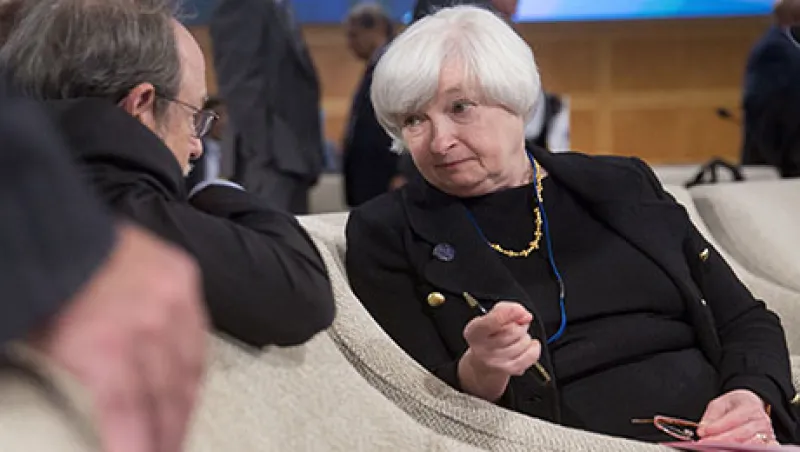By historical standards, interest rate rises in the U.S. have been an unusually long time in coming, but the Federal Reserve is likely to start the process in 2015. The U.S. has achieved self-sustaining growth, bank lending is growing moderately, and unemployment has fallen to 6 percent. Certainly, there is no case for the continuation of quantitative easing. But though the downward trend of inflation argues against higher interest rates in the short term, it is inevitable in the medium term.
Although quantitative easing has been helpful to the current bull market, it is far from the sole explanation. It is too easily forgotten that quantitative easing was embarked upon not as a gimmick to raise asset prices but as a necessary route to prevent a downward spiral in the money supply. Equity markets have rerated from the lows seen in 2009 and 2011, but ratings are still moderate by historical standards, thanks to steady earnings growth, and below the averages. Only if loose money drove valuations well above historical levels would we be concerned.
Volatility is endemic in financial markets as the price of excess returns. The first rise in interest rates may trigger another burst of volatility or it may prove to have been well discounted. Whichever it is, long-term investors should regard sharp corrections as a sign of a healthy market, warning investors against complacency and short-termism as well as reminding them that risk is the inevitable counterpart of reward.
A more severe reaction is possible if interest rates have to be raised significantly higher than expected. This could happen if credit growth accelerates, if inflationary pressures reverse or if there is some reflationary shock. That could cause the yield on ten-year Treasuries to rise well above 3 percent to the point at which they undermine the relative attractiveness of equities. Since 1980, long-dated Treasury yields have broadly tracked nominal GDP growth, but in recent years they have been comfortably below that level.
A return to the long-term trend, justified by a return to the credit-fueled growth of the 1980s and 1990s, would imply a yield of about 4.5 percent or higher. We regard this as very unlikely, however. In our view, there is a strong case for expecting real interest rates, both long- and short-term, to remain subdued by comparison with the past. Whereas the U.S. economy is back to normal and could post real growth rates as high as 3 percent for the foreseeable future, other economies are either continuing to decelerate or experiencing weak growth rates. This is reflected in soft commodity prices and extremely weak world trade growth.
Although showing some signs of picking up, wage inflation is still close to 2 percent. U.S. consumers remain burdened with debt and have borrowed little compared with past cycles, and federal government debt levels are only now beginning to decline as a proportion of GDP. Elsewhere in the world, government deficits continue to accumulate. Consequently, our base case is that inflation remains subdued and official U.S. interest rates will rise to a moderate, neutral level.
Max King is a portfolio manager and strategist for the multiasset team and Michael Spinks is co-head of the multiasset team at Investec Asset Management in London.
Get more on macro.






